A powerful solar flare measuring X3.9 erupted from Active Region 3664 at 06:54 UTC on May 10, 2024. The event started at 06:27 and ended at 07:06 UTC.
- This is the 10th X-class solar flare since May 3.
- We now have 4 halo CMEs heading our way (+2 more very likely — produced on May 9 and 10).
- Periods of G4 – Severe to G5 – Extreme geomagnetic storming are possible starting May 11.
A Type II Radio Emission (with an estimated velocity of 1 248 km/s) was associated with the event — indicating a coronal mass ejection (CME) was produced. Additionally, a Type IV Radio Emission was detected at 06:51 UTC — suggesting a strong CME was produced.
A 10cm Radio Burst (tenflare), lasting 16 minutes and with a peak flux of 900 sfu, was associated with the event, indicating that the electromagnetic burst associated with a solar flare at the 10cm wavelength was double or greater than the initial 10cm radio background. This can be indicative of significant radio noise in association with a solar flare. The noise is generally short-lived but can cause interference for sensitive receivers including radar, GPS, and satellite communications.
Radio frequencies were forecast to be most degraded over eastern Europe, central and NE Africa, the Middle East, entire Asia, and the Indian Ocean at the time of the flare.
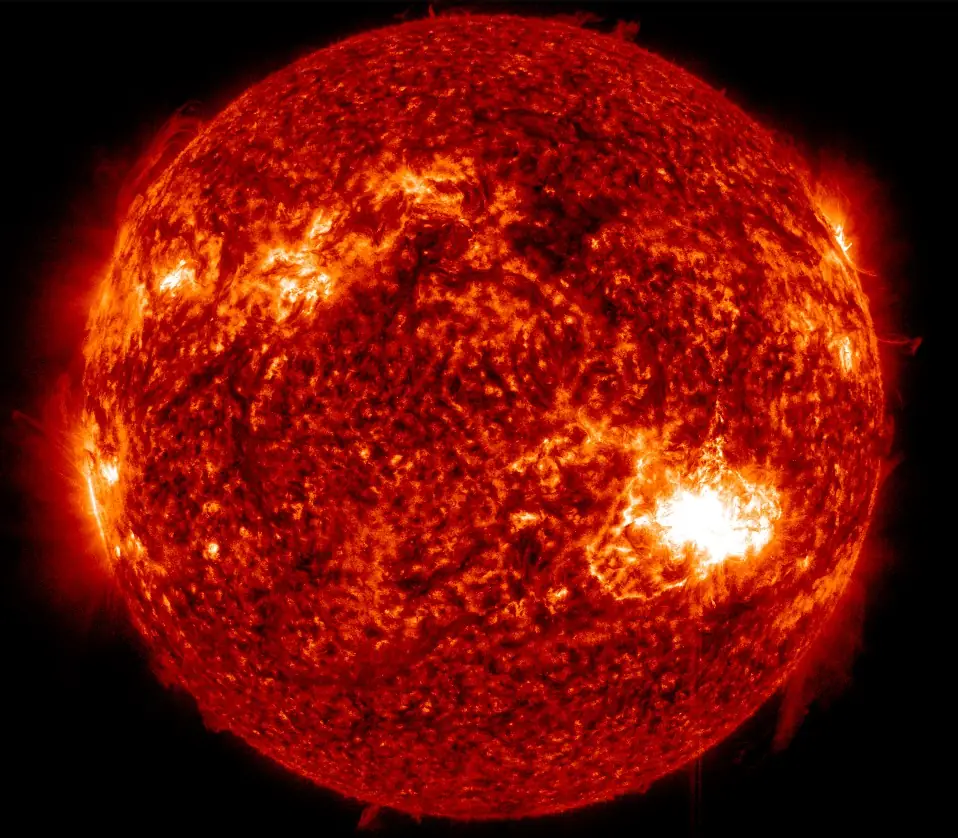
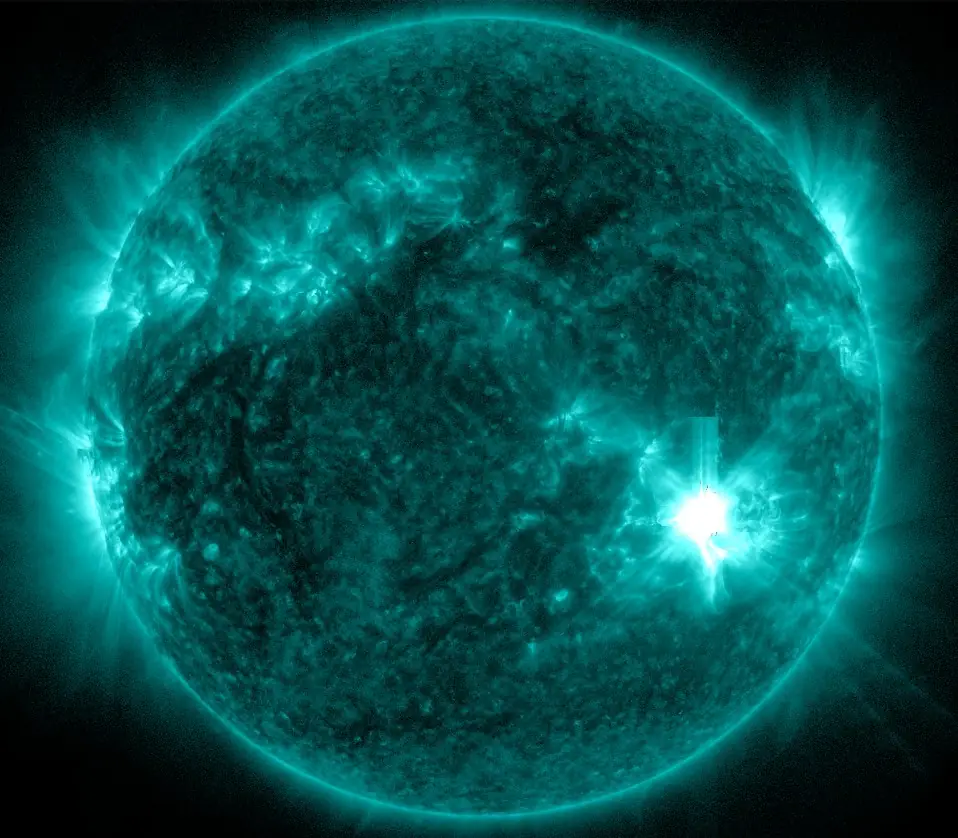

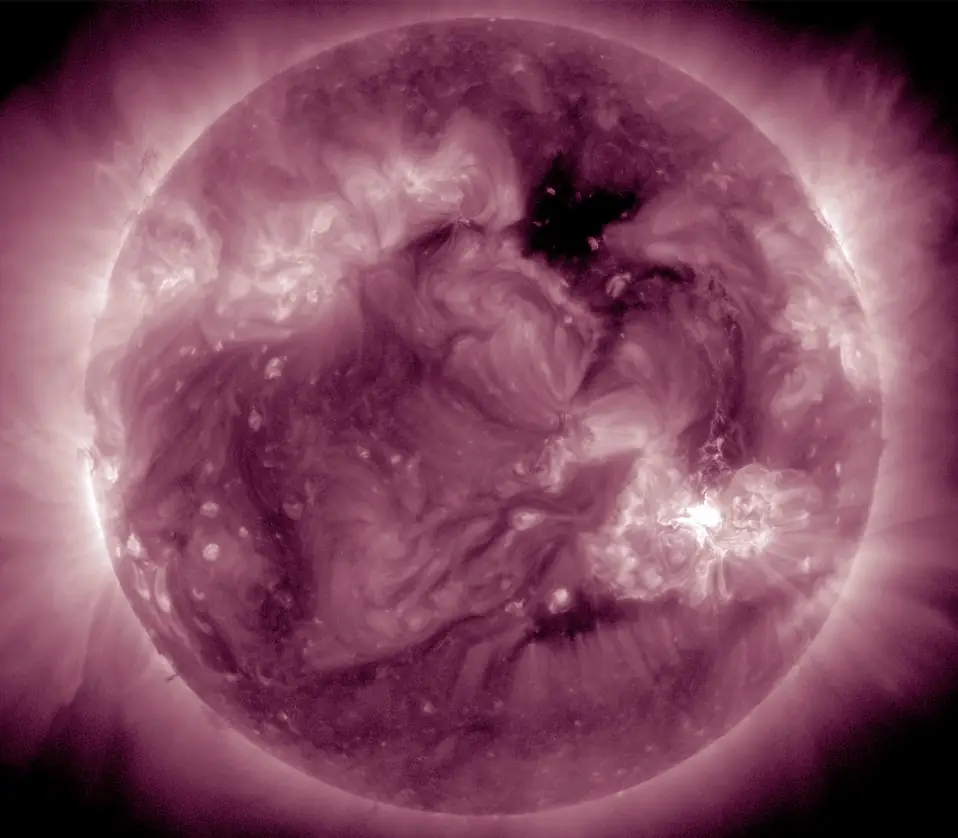

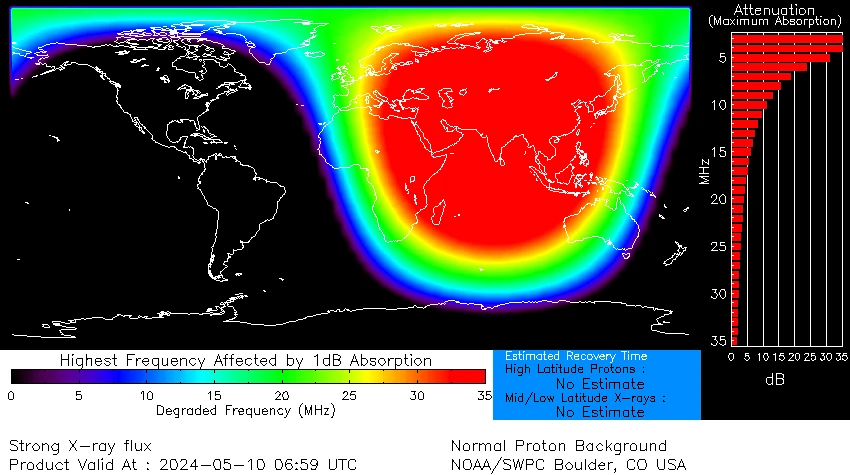

Coronagraph data for this event is still not in, but if we consider the location of region 3664 and the nature of its previous events — we might get another Earth-directed CME.
The Sun has been extremely active since the beginning of the month, producing 75 M-class flares — some of them very close to X-class, and 10 X-class flares —the strongest of which was X4.5 on May 6, followed by today’s X3.9.
| Max class | Time (UTC) |
|---|---|
| X3.9 | 05/10, 06:54 |
| M1.3 | 05/10, 06:24 |
| M1.4 | 05/10, 03:29 |
| M1.3 | 05/10, 00:13 |
| M1.5 | 05/9, 23:51 |
| M1.2 | 05/9, 23:08 |
| M2.6 | 05/9, 22:41 |
| M1.0 | 05/9, 22:15 |
| M1.0 | 05/9, 21:21 |
| X1.1 | 05/9, 17:44 |
| M3.7 | 05/9, 13:23 |
| M2.9 | 05/9, 12:12 |
| M3.1 | 05/9, 11:56 |
| X2.2 | 05/9, 09:13 |
| M2.1 | 05/9, 08:40 |
| M2.4 | 05/9, 06:27 |
| M2.3 | 05/9, 06:13 |
| M1.7 | 05/9, 04:49 |
| M4.5 | 05/9, 03:32 |
| M4.0 | 05/9, 03:17 |
| X1.0 | 05/8, 21:40 |
| M1.7 | 05/8, 20:34 |
| M2.0 | 05/8, 19:21 |
| M2.9 | 05/8, 18:36 |
| M7.9 | 05/8, 17:53 |
| M8.6 | 05/8, 12:04 |
| M4.1 | 05/8, 11:22 |
| M2.1 | 05/8, 09:48 |
| M1.8 | 05/8, 09:37 |
| M4.5 | 05/8, 07:41 |
| M7.1 | 05/8, 06:53 |
| X1.0 | 05/8, 05:09 |
| M3.5 | 05/8, 04:30 |
| M1.9 | 05/8, 03:42 |
| M1.8 | 05/8, 03:27 |
| M3.4 | 05/8, 02:27 |
| X1.0 | 05/8, 01:41 |
| M8.2 | 05/7, 16:30 |
| M1.0 | 05/7, 13:35 |
| M1.0 | 05/7, 13:25 |
| M1.5 | 05/7, 12:54 |
| M2.4 | 05/7, 11:50 |
| M1.3 | 05/7, 08:23 |
| M5.1 | 05/7, 06:16 |
| M2.6 | 05/7, 00:58 |
| M4.3 | 05/6, 22:27 |
| M1.2 | 05/6, 21:48 |
| M1.5 | 05/6, 09:59 |
| X4.5 | 05/6, 06:35 |
| M1.3 | 05/6, 05:28 |
| M1.6 | 05/6, 01:06 |
| M1.3 | 05/5, 19:52 |
| M1.0 | 05/5, 18:40 |
| M1.3 | 05/5, 17:01 |
| M2.2 | 05/5, 15:38 |
| M1.3 | 05/5, 14:47 |
| X1.2 | 05/5, 11:54 |
| M7.4 | 05/5, 10:00 |
| M2.3 | 05/5, 09:38 |
| M1.3 | 05/5, 08:19 |
| X1.3 | 05/5, 06:01 |
| M8.4 | 05/5, 01:27 |
| M9.0 | 05/4, 23:48 |
| M3.2 | 05/4, 22:37 |
| M1.3 | 05/4, 18:20 |
| M1.5 | 05/4, 07:07 |
| M9.1 | 05/4, 06:19 |
| M1.6 | 05/4, 00:36 |
| M2.4 | 05/3, 23:30 |
| M1.0 | 05/3, 23:16 |
| M1.2 | 05/3, 22:47 |
| M4.4 | 05/3, 08:11 |
| X1.6 | 05/3, 02:22 |
| M2.7 | 05/3, 00:15 |
| M2.7 | 05/2, 20:57 |
| M1.0 | 05/2, 02:17 |
| M1.8 | 05/1, 22:31 |
| M1.9 | 05/1, 14:44 |
| M1.8 | 05/1, 14:32 |
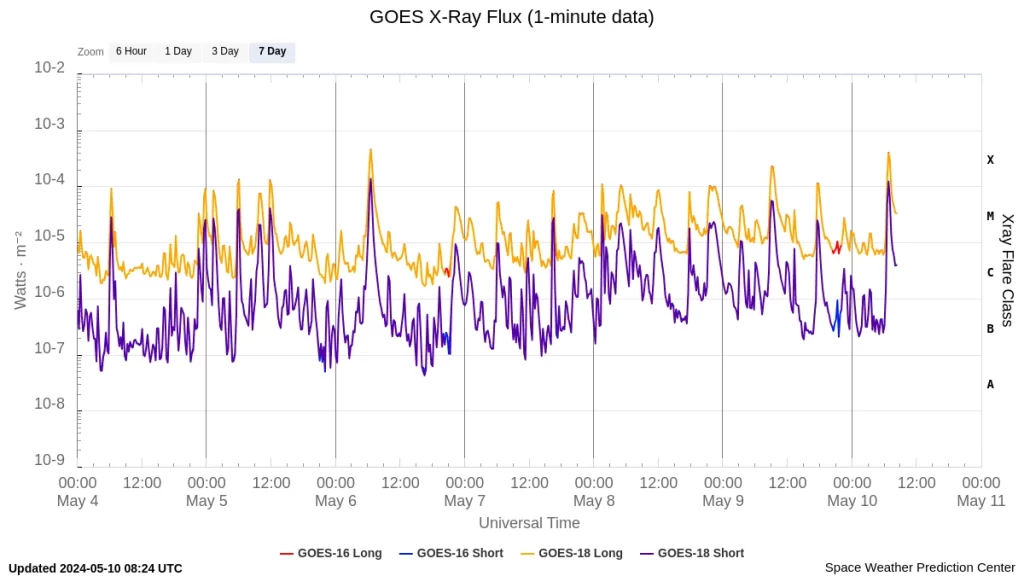

The largest events yesterday were an X2.2 flare at 09:13 UTC and an X1.1 at 17:44 UTC — both from AR 3664 and accompanied by Type-II and IV radio sweeps, and complex radio burst signatures observed across discrete frequencies.
A halo coronal mass ejection (CME) associated with the X2.2 flare is Earth-directed with arrival likely on May 11.
Another halo CME, associated with the X1.1 flare is visible in LASCO imagery and a part of it is also heading toward us.
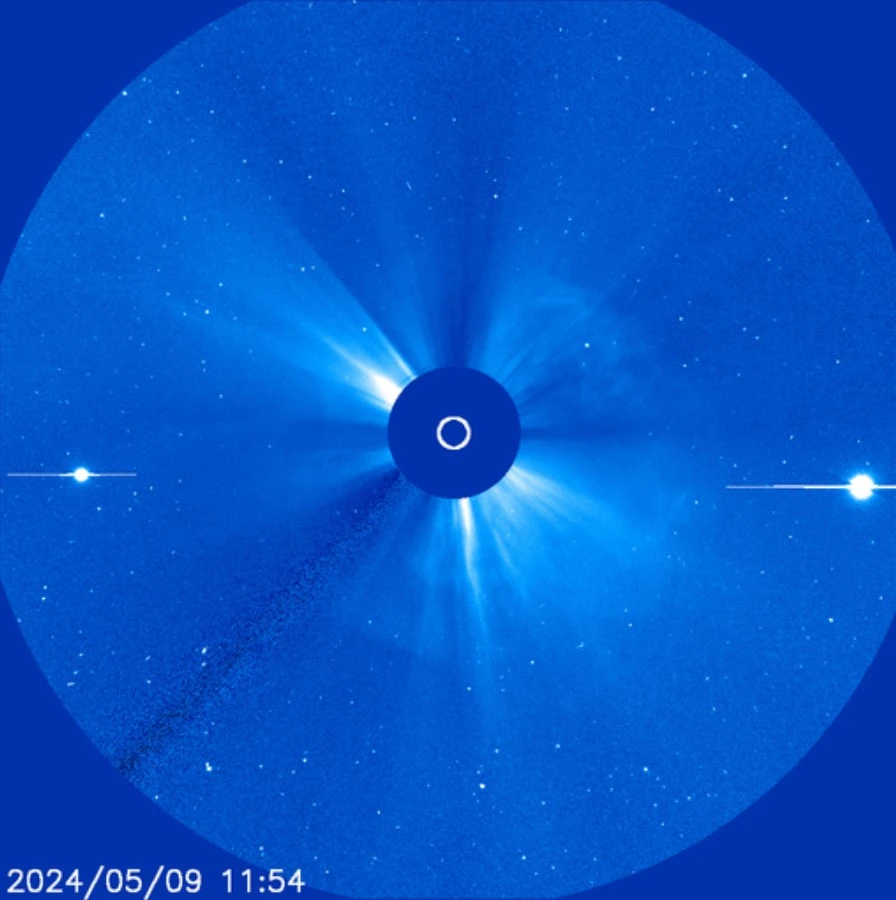

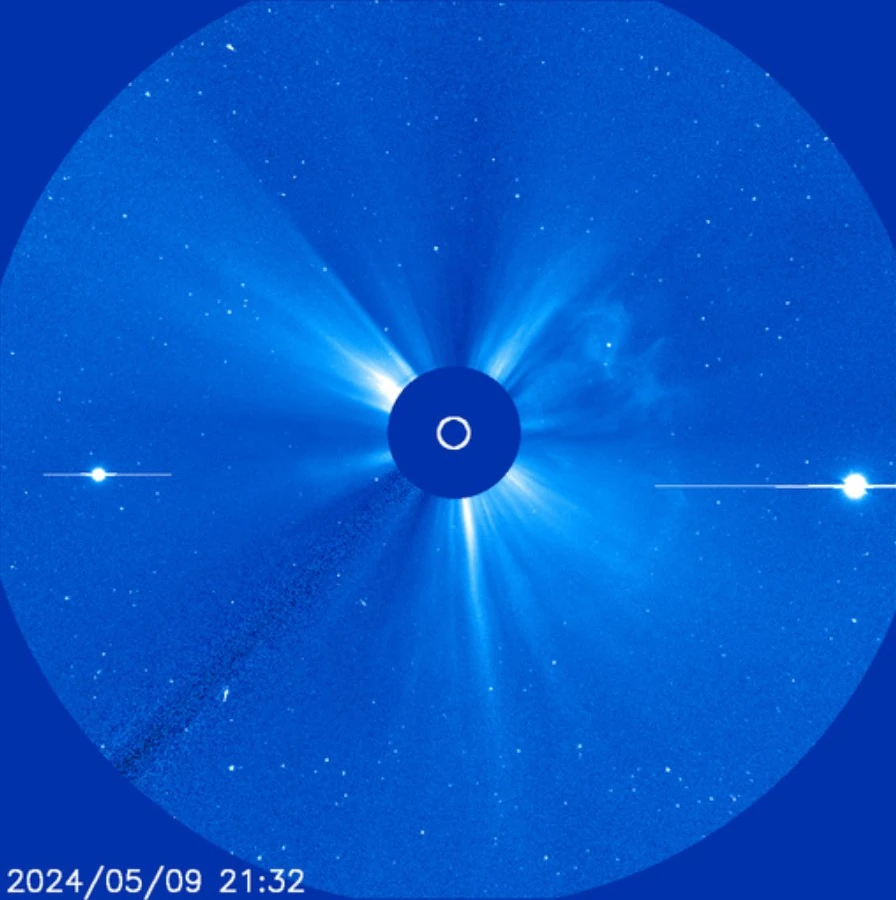

A total of four halo CMEs produced on May 8 and 9, and a CME associated with a filament eruption on May 8, are expected to arrive beginning late on May 10 with the bulk of geomagnetic impacts predicted on May 11, according to SWPC.
At least 3 of them are expected to merge into one and form one potent Canibal CME. Canibal CMEs form when fast-moving CMEs overtake slower CMEs in front of them and impact Earth as one — causing protracted magnetic storms.
CMEs associated with X1.1 at 17:44 UTC on May 9 and today’s X3.9 are expected to reach us on May 12/13.
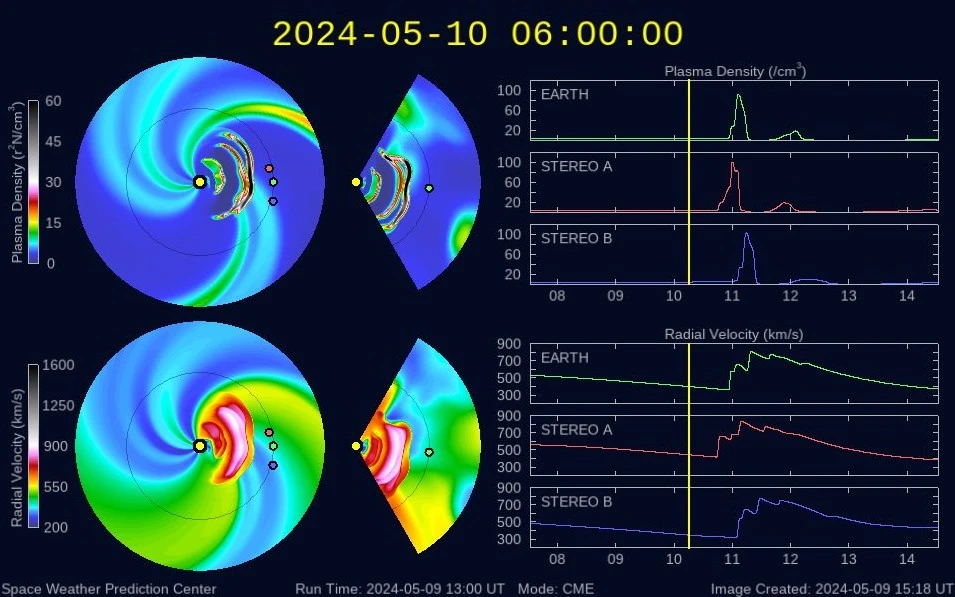

As a result of very high solar activity from May 6 through 9, a G4 – Severe or greater geomagnetic storm watch is in effect for May 11. Due to continued high levels of activity and Earth-directed CMEs, we might even see G5 – Extreme levels, or at least prolonged G4 – Severe periods in the days ahead.
Detailed explanations of both storm classes can be seen below or in yesterday’s report.
According to the SWPC forecast issued at 00:30 UTC on May 10, periods of active conditions and G1 – Minor storming are likely on May 10 with the possible early arrival of a series of CMEs (from May 8 and 9). The bulk of the incoming CMEs is expected to arrive early on May 11 with periods of G1 – Minor to G2 – Moderate geomagnetic storming expected, and periods of G3 – Strong to G4-Severe storms likely.
Solar activity is expected to persist at high to very high levels through May 12, with M-class flares (95%) expected and X-class flares (60%) likely on all three days, due to the flare potential of Region 3664.
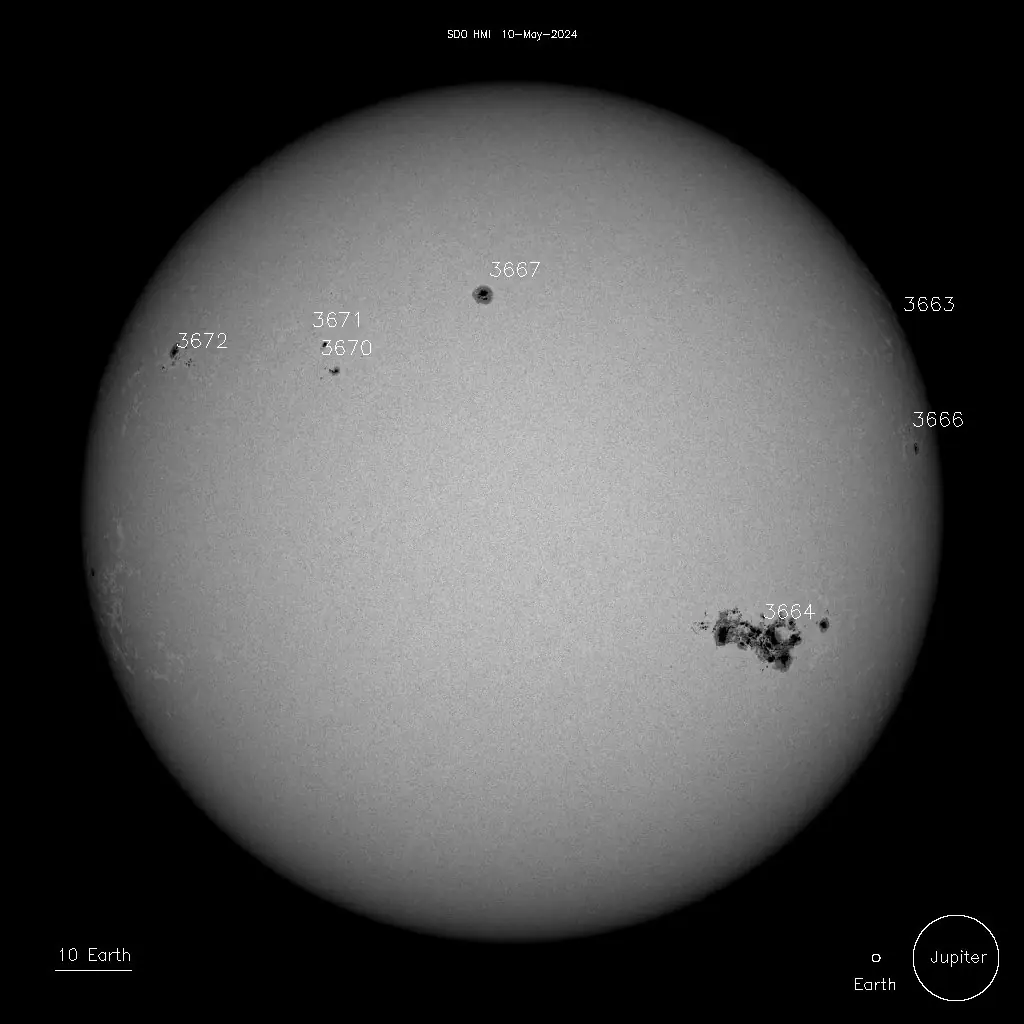

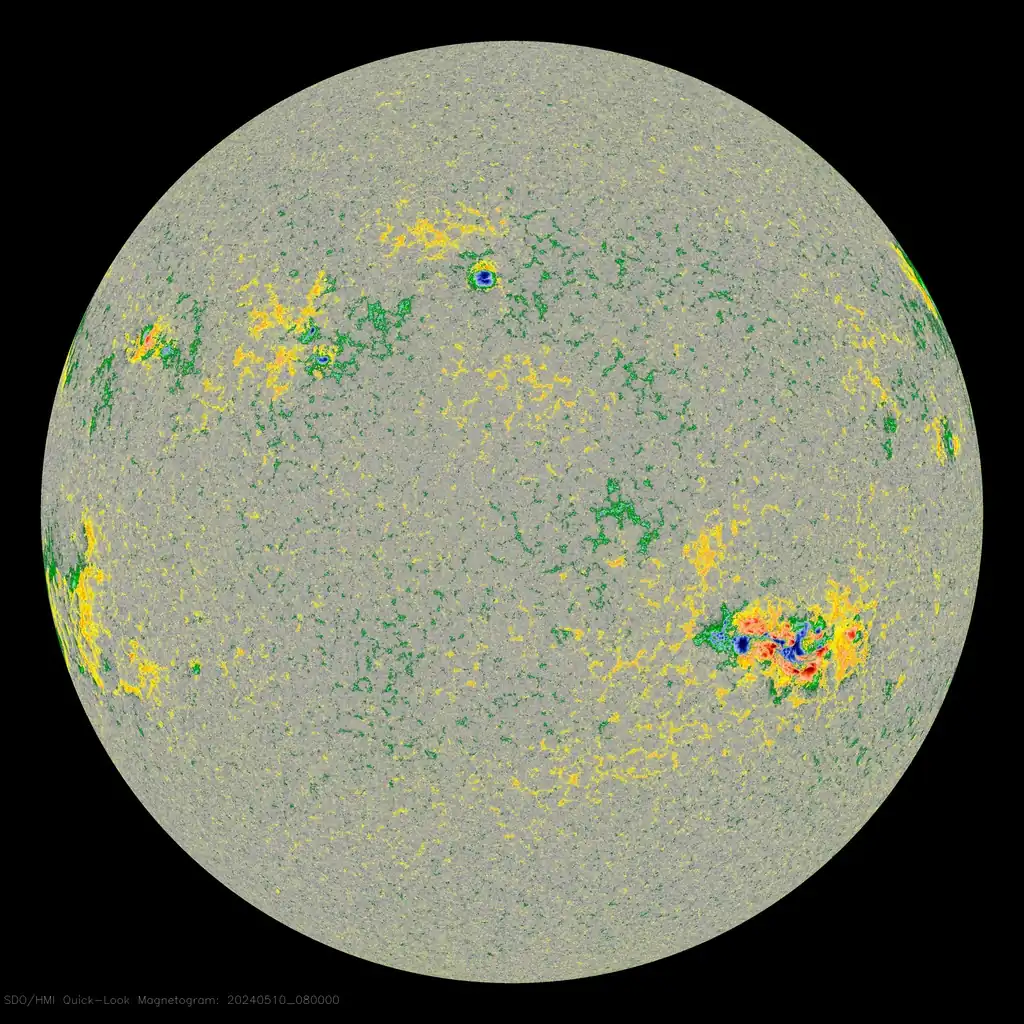

Active Region 3664 still has a ‘beta-gamma-delta’ magnetic configuration and is capable of producing more major eruptions on the Sun.
While the likelihood of Earth-directed CMEs from this region is now diminishing, we will soon enter a period of increased risk for solar radiation storms as the region rotates closer to the Sun’s western limb.
This is still a massive Carrington-class region with a huge flare potential, so after or during the anticipated severe geomagnetic storming we might also see a strong solar radiation storm.
Featured image: X3.9 solar flare on May 10, 2024. Credit: NASA SDO/AIA 304, Helioviewer, The Watchers
G4 – Severe geomagnetic storm expected as multiple CMEs merge and impact Earth on May 11
Thursday, May 9, 2024
At least 5 CMEs heading toward Earth, G3 – Strong Geomagnetic Storm Watch in effect for May 11
Thursday, May 9, 2024
Long-duration X1.0 solar flare erupts from geoeffective Region 3664, CME impact expected on May 11
Wednesday, May 8, 2024
Giant hailstones destroy over 15 000 homes in Manipur, India
Tuesday, May 7, 2024
Historic floods hit Porto Alegre, Rio Grande do Sul, Brazil
Monday, May 6, 2024
Major X4.5 solar flare erupts from Region 3663 — fourth X-class flare in 3 days
Monday, May 6, 2024
Major X1.2 solar flare erupts from Region 3663 — second X-class flare of the day
Sunday, May 5, 2024

